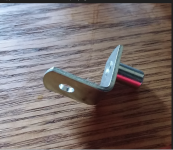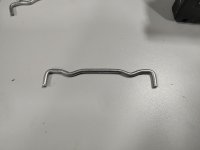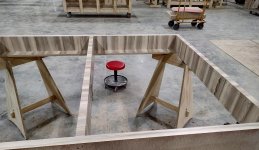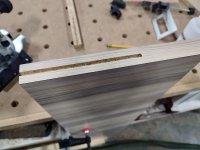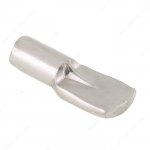I second the method Packard describes above. I've used these wire supports from Lee Valley:
https://www.leevalley.com/en-us/sho...on/shelf-supports/40191-hidden-shelf-supports which are available in two lengths. I see they now have a similar item in other lengths:
https://www.leevalley.com/en-us/sho...ion/shelf-supports/52465-wire-shelf-supports. The first, which I have used, calls for a 1/8" hole and that works well. The second calls for a 3mm hole, which is slightly smaller than 1/8", so it might be too loose in a 1/8" hole. You can get a 3mm drill bit easily enough.
I have the Kreg shelf pin jig which has 1/4" bushings so I got some sleeves like theses:
https://www.amazon.com/gp/product/B009YLD2QK/ref=ppx_yo_dt_b_asin_title_o08_s00?ie=UTF8&psc=1. I put them into the jig bushings and then used a 1/8" drill bit. Worked fine except sometimes the sleeve came out with the bit and had to be reinserted into the jig.
For the slots in the sides of the shelf I used a 1/8" slot cutting bit in the router table. That allowed me to easily cut a slot along the side but stop before breaking through the front of the shelf.
I've also used the method ferntree originally suggested. To cut the recesses in the shelf bottoms, I set up a 1/4" straight bit in the router table, set the fence for the distance from the front and back edges (37mm in his case) and set up a stop block to limit the length of the slot. Set the bit height to the depth of the slot needed. Then, slide the shelf along the fence to cut one slot and rotate the shelf 190 degrees to cut a second one. After doing all the shelves, move the stop block to the other side of the bit and finish the other slots on each shelf.
I did find this to be a bit fussy in terms of getting things lined up because success depends on accurate setup to make sure the slots in the shelves end up spaced the same as the shelf pins and the front of the shelf lines up with the front of the case. Lots of test pieces and test cuts is the key.
Finally, for that method I used shelf pins like these
https://www.leevalley.com/en-us/sho...189-economy-steel-shelf-supports?item=00S1045 rather than the type with a spoon-shaped protrusion.

